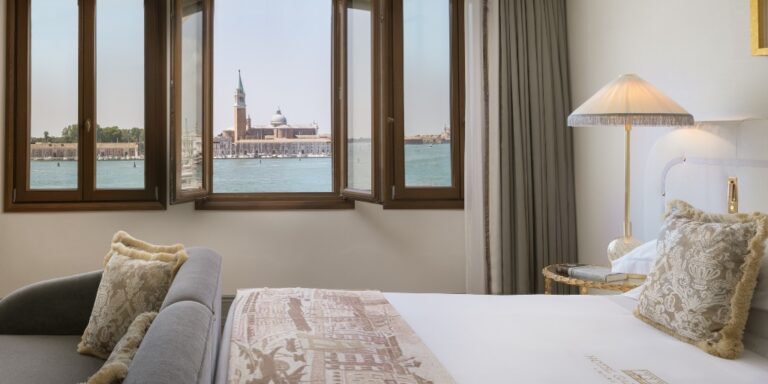Marriott has celebrated the milestone of opening its sixtieth St Regis hotel, with the launch of the St Regis on the Bund, Shanghai.
With 192 rooms including 13 suites, the hotel offers guests a luxury experience, combined with a dose of 1920s Art Deco style from another age, drawing on 1920s Shanghai for inspiration. Displayed throughout the interior are 72 original artworks from renowned Chinese artists.
Stunning views across Shanghai
The Shanghai property is owned by Pacific Eagle Real Estate and has been opened in one of the city’s most historic neighbourhoods. Its location offers guests great views of the Huangpu River and the Pudong skyline.
The St Regis brand was born in 1904, when John Jacob Astor opened the first hotel with the name above the door, in New York. The 18 storey property distinguished itself externally by its Beaux Arts, limestone clad walls, and internally by it lavish marble and bronze panelling, while every room had the latest technology in the form of a telephone.
While that property is still today named St Regis, it was only in the 1990s that hotel group Starwood started building a hotel brand, first adding the name to a former Ritz-Carlton hotel in Aspen, Colorado. That was followed by hotels in Washington DC, Houston and Philadelphia rebranding as St Regis properties.
With Marriott taking over the Starwood group in 2016, they gained stewardship of the St Regis brand. By that time, Starwood had grown St Regis to 38 hotels, with 15 in Asia Pacific, and five each in the Europe and MEA. Marriott has continued to grow the brand internationally, notably in Asia Pacific and MEA, where guests appreciate the brand’s link with the luxury of the period of early 20th century America.
Upcoming openings for the St Regis brand include the St. Regis Al Mouj Muscat Resort in Oman, which is due to open in the next few months. The 269 room new build project will have five restaurants, and will feature a 360 berth marina. It will be swiftly followed by the launch of St. Regis Cap Cana Resort and Residences in the Dominican Republic, on the east coast of the country with access to a beach with miles of white, powdery sand. And around the same time, St. Regis Shenzhen Bao’an will open in China’s Guangdong province, underlining the importance of China as a market for this luxury brand.
A strong pipeline
In early 2025, these will be joined by another St Regis resort, opening on the Caribbean island of Aruba. Situated on the island’s Eagle Beach, it will have 252 rooms, and plentiful terraces and pools for guests to enjoy.
The strong pipeline for the future, which will soon see St Regis reaching 70 hotels open, includes St Regis Dubai, Marrakech, New Delhi, Nashville and Australia’s Gold Coast. In Europe, there will be openings in London, and in Belgrade. Central American openings include Costa Mujeres and Los Cabos in Mexico. And in China, projects are under construction in Haikou, Xiamen, Hangzhou, Xi’an and alongside Hangzhou’s Qiandao Lake.






